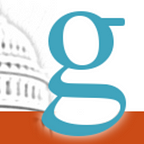Local and Independent Television Protection Act would overturn a Trump-era rule that’s permitted greater media consolidation in TV
Corporations aren’t allowed to own more than a certain percentage of the television market, under federal law. Should corporations get a special “discount” on certain types of television stations when their total media ownership is calculated?
Context
For decades, the federal government had instituted caps on media ownership. No individual media conglomerate was allowed to collectively own so many local television stations throughout the country that they would cumulatively reach more than 39 percent of U.S. households.
This rule was implemented to preserve local ownership and to prevent too many local stations from being owned by a national parent company.
Under a rule in place since 1985, the Federal Communications Commission (FCC) had counted so-called Ultra High Frequency (UHF) channels for less than other channels when counting towards a company’s total media ownership. That was because UHF channels were considered lower quality when transmitting.
In practice, what the rule had done was allow conglomerates to more easily accumulate local stations on the UHF bandwidth, without running afoul of the “39 percent” maximum.
FCC votes
But after all televisions were required to switch from analog to digital by 2009, the 1980s-era rule became an anachronism, since most channels were now broadcasting on UHF anyway.
So in September 2016, the FCC under Democratic control voted 3–2 to eliminate the rule. In practice, this made it harder for conglomerates to accumulate local stations under their ownership.
However, that changed mere months later after Trump won. In April 2017, the FCC — now under Republican control — reinstated the 1980s-era rule once again in a 2–1 vote.
What the bill does
The Local and Independent Television Protection Act [H.R. 3478] would return to the Obama-era rule once more by bringing back the requirement that media companies couldn’t count their UHF holdings only half as much. And it would make it much harder for companies to own large swaths of local stations throughout the country.
The bill was introduced in July 2017, about three months after the Republican-led FCC reinstated the 1985 rule, by Rep. Jared Huffman (D-CA2).
What supporters say
Supporters argue that the bill would protect media companies from becoming too large and powerful, which could significantly limit a viewer’s choices in the corporations who control their viewing habits.
“Preventing monopolies in local media and turning back the tide of corporate consolidation has never been more vital than it is today,” Huffman said in a press release.
“In Eureka, California alone [which Huffman represents], the FCC’s recent decision to reinstate the discredited and antiquated UHF discount means that a single right-wing media owner, Sinclair Broadcast Group, will control a majority of the news that my constituents in Eureka see on television,” Huffman continued, “no matter which news broadcast they choose to watch.”
“This is not the Soviet Union: Americans deserve a meaningful choice in their local news.”
What opponents say
As you might guess, one opponent is Trump’s FCC Commissioner Ajit Pai, who led the charge in reinstating the rule in the first place.
Pai defended the original rule as inextricably linked to the 39 percent cap, arguing that to eliminate the UHF discount without simultaneously raising the cap takes some companies that previously were under the limit, unfairly and abruptly putting them over it — in violation of federal law.
“Companies that were previously under the national cap suddenly went over it. But in reaching this decision, the Commission did not examine whether the facts justified a more stringent cap. Nor did it analyze whether the cap should have been raised at the same time as the UHF discount was eliminated,” Pai said in a statement. “This was illogical and likely unlawful.”
Pai also defended the rule on the grounds of tradition, with nonsensical analogies.
“Some things are inextricably linked. Penn Jillette will be forever tied to Teller. Daryl Hall will forever be tied to John Oates. Toni Tennille will forever be tied to the Captain. And the Cleveland Browns will forever be tied to . . . well, not-success, shall we say,” Pai said in that same statement. “So, too, is the Ultra High Frequency (UHF) discount inextricably linked to the national television ownership cap.”
The UHF discount is not “inextricably linked” to the cap, as proven by the fact that it was unlinked in 2016.
Odds of passage
The bill has attracted 19 House cosponsors, all Democrats. It awaits a possible vote in the House Energy and Commerce Committee.
Although its odds of passage are slim to none in the Republican controlled House, the legislation may fare much better if Democrats retake the chamber after November’s midterm election.
This article was written by GovTrack Insider staff writer Jesse Rifkin.
Like our analyses? Want more? Support our work!
